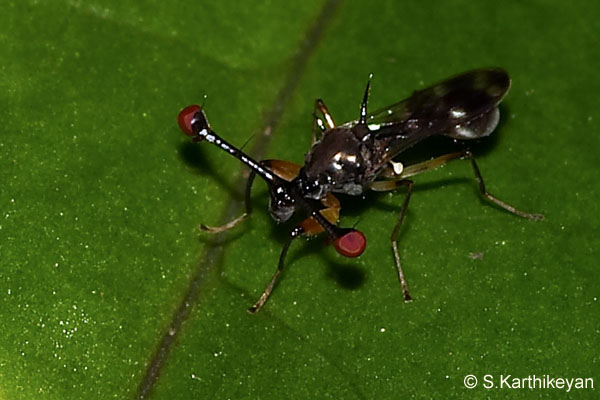We were on a short holiday in the Coorg District of Karnataka. It was September and the monsoon was still active and infact we experienced some heavy spells during the first two days of the trip. Nevertheless, we had thoroughly enjoyed the trip and even before we realised it was time for us to pack our bags in preparation to return home.
The last morning that we spent there turned out to be a glorious day. The clear blue sky on a sunny morning was just perfect for a quick walk into the forest before it was time to say bye to our hosts. During the walk, we saw several butterflies that had been in hiding during the previous days. We lost track of time watching and photographing them.
When we realised that it was time for us to hurry back, we started to retrace our steps. A butterfly basking on low vegetation, not far from a small stream, was too tempting; I stopped to photograph it. While photographing the butterfly, I saw through my lens a little fly that took me by total surprise. It had its eyes placed on the tip of stalks growing out of its head! It was constantly moving on a broad leaf. I quickly took several pictures.

On my return I poured over books to find out more about this strange creature. It turned out to be what is commonly called a Stalk-eyed fly. There are over 150 species of stalk-eyed flies (Family Diopsidae) in the world, largely in tropical areas, some with stalks over a centimetre long! I also learnt that there is very little known about them. The books also said that the adults are known to occur on streamside vegetation, sometimes in large numbers. This was exactly the kind of place where I saw the stalk-eyed fly. So, the next time you are walking along some streamside vegetation, be sure to keep an eye open for this strange creature!
In the recent times, I have seen this little (< 1 cm. in length) in several other places particularly during and just after the monsoon.
See these links :
http://www.zoologischemededelingen.nl/cgi/t/text/get-pdf?c=zoomed;idno=8501a06
http://muscicapa.blogspot.com/2011/06/aerostatic-skeletons.html